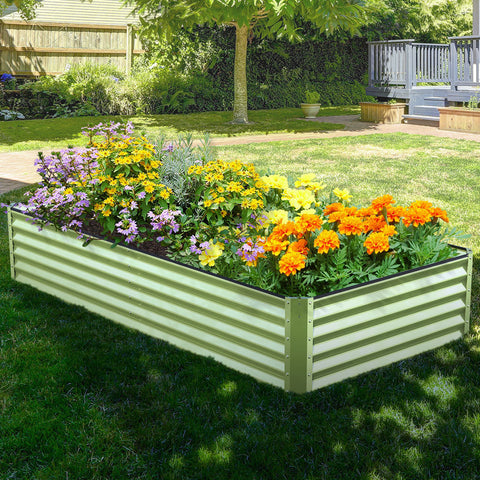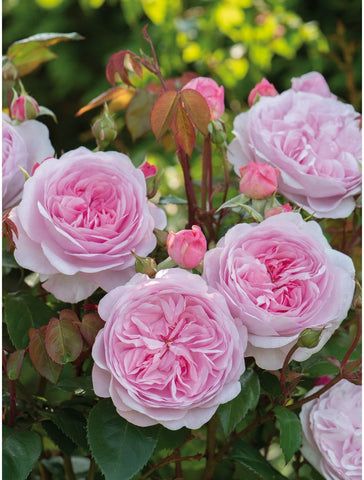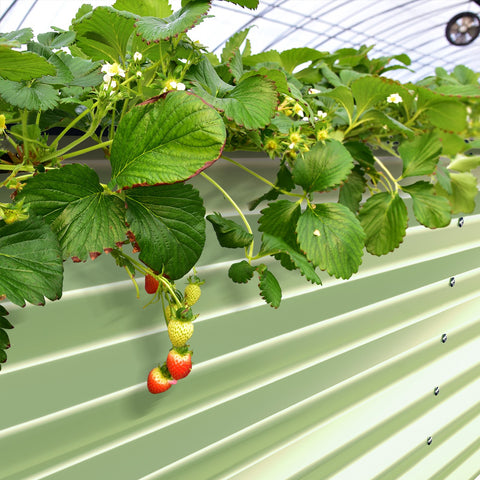With our simple guide, create a colorful and vibrant container garden where you can enjoy the entire season. The following content also has some reference value for raised garden beds.
Containers are a simple way to add color to your garden, courtyard, or porch. Of course, you can throw some begonia or petunia flowers into the pot and that's it. But with just a little extra effort, container gardening can be amazing, with flowerpots filled with lush flowers and leaves. In a beautiful flowerpot, the correct arrangement of plant combinations can be pure magic.

Like plants, containers also have characteristics to consider, including weight, sensitivity to weather changes, and appearance. When choosing container gardening containers, you also need to consider your budget, space, and style. Please remember that the larger the size, the fewer times you need to water, but no matter what you choose, make sure there are drainage holes at the bottom of the container.
Some common types of pots include the following:
Terra Cotta: A multifunctional and inexpensive clay container is also known as a clay pot. You can find them simple and unadorned, and they can also be decorated with colorful glaze. The only drawback of using red pottery is that it is a bit fragile. If handled too rough, it will shatter and crack, and may be damaged by cold temperatures (empty and stored indoors in cold winter areas).
Concrete: Concrete containers can withstand any weather. Be careful where placing concrete flower pots, as they are very heavy and difficult to move, especially when filled with soil and plants.

Wood: Choose durable wood, such as cedar or non-toxic treated pine. To help them last longer, apply a layer of transparent waterproof sealant to all surfaces and mark them for outdoor wood.
Metal: Galvanized bathtubs and buckets are excellent choices for container gardens. However, be careful when using metal containers, as they can quickly heat and cook your plants in sunlight. To protect plants, lay landscape fabric on the container and place it in a cool place.
Plastic, fiberglass, or resin: These types of containers can be made into almost any other type of shape (but at a lower price and weight). Their quality is not as high or long-lasting, but they can provide a specific appearance.
Reusable containers: Choose old baskets, tin buckets, bird pots, and watering containers to hold your favorite plants. The frugal appearance is both fashionable and rustic.
Choose a color scheme and plant combination
The color theme of container gardening can help you choose the appropriate plant combination. You can fade the color of your container or focus on the flowers and leaves you plan to include. When combining plants in containers, ensure that they all require the same level of light and watering frequency. Plant in odd numbers and ensure at least one creepy, filling, and overflow plant. Combining these three types of plants will increase interest and balance.
Filler: Fillers are often more rounded or raised, which can make the container look very full. These are usually placed in front of or around thrillers. In a container that is long and narrow like a window box, the filling is placed between the edge of the container and the thriller.
Limit the number of plants you can use
Be careful not to overfill the container garden. If plants are too crowded, growth above and below the soil will be hindered.
Fill the container with a potting mixture
Once you have selected your plants and containers, it is time to start planting. Fill the container two-thirds with a universal sealing mixture. Don't be tempted to use the soil in the garden. It is too heavy to drain water like it is placed in a container.

If you have a very large flowerpot and want to use fewer potting mixtures, you can invert the smaller empty container and place it at the bottom to occupy some space. Then fill them with the potting mixture until your container is two-thirds full.
Before filling the container, you can place a broken clay can on the drain hole to prevent the filling mixture from draining, but make sure that the water can still be drained. Do not add a layer of rock at the bottom, as it will make it more difficult for water to drain, rather than helping.
Place plants in containers
When you are ready to add plants, gently press the side of the nursery container to loosen the root ball and slide it out. Avoid pulling on the plant itself as it may damage it. Then, place the plant on the potted mixture so that the top of its root bulb is several inches lower than the edge of the container. This will make it easier for you to water in the future.
Fill more potted plant mixtures around your plants to ensure that the depth of the stems in the soil does not exceed the depth in the nursery container. Gently press the mixture with your hand to eliminate large air pockets.
How to plant a simple container garden in sunny conditions
Watering plants
Water your container garden to help soil settle. If necessary, more soil can be added to cover all root systems. Remember to keep the soil a few inches below the edge of the container in a horizontal plane to prevent water and soil from overflowing.
Foliage First Container Idea
Don't be afraid to confuse different types of plants, such as annuals, perennials, vegetables, and even small shrubs. When container gardening, it is important to choose plants that enjoy the same lighting conditions.








